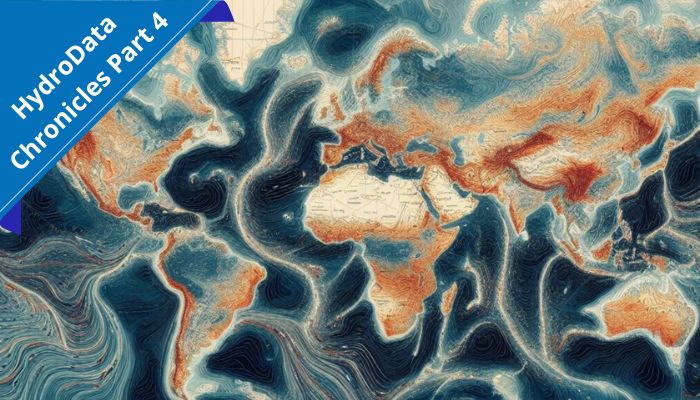
Welcome back to the HydroData Chronicles, where we continue to explore the wealth of hydrological data shaping climate research worldwide. In this installment, we celebrate an incredible milestone — 35 years of global gridded precipitation data from the Global Precipitation Climatology Centre (GPCC).
The Origins of GPCC
Founded by the Deutscher Wetterdienst under the auspices of the World Meteorological Organization, the GPCC was born out of a growing need for reliable global gridded precipitation datasets. GPCC was developed as a German contribution to the World Climate Research Programme and to help close the global energy and water cycles. What began as a three-year project has grown into an internationally recognized data provider, contributing to critical climate initiatives like the Global Climate Observation System or WMO’s High-Quality Global Data Management Framework for Climate. GPCC’s work started with monthly precipitation totals, later expanding to include daily data in 2012.
GPCC’s Data: A Global Treasure Trove
Today, GPCC’s database contains more than 126,000 weather stations worldwide (most of them provided by national meteorological and hydrological services), including many time series longer than 130 years.
GPCC provides a range of data products tailored to meet the needs of different users. Some of the most notable monthly-resolution datasets are the Monitoring Product Version 2022, the Full Data Monthly as well as the Drought Index Versions 1 & 1.1. For daily-resolution data, GPCC offers the First Guess Daily and the Full Data Daily.
GPCC’s Precipitation Climatology Version 2022. Each of the 12 graphics depicts the mean values for one month (@ Deutscher Wetterdienst, under the Creative Commons Attribution 4.0 License)
Unmatched Data Quality
What sets GPCC apart from other data centers is its commitment to data quality. The data undergoes an extensive semi-automatic quality control including different quality checks depending on the data source and the precipitation analyses while also taking into account the metadata (e.g. the coordinates of the station and its height).
Before the precipitation totals are loaded into the data bank, they are compared against old station values stored in the data bank (station statistics) as well as against the surrounding stations. Suspicious values are then manually checked, confirmed, corrected or rejected. The precipitation analyses are based on the largest in situ precipitation data collection worldwide, regarding number of stations and length of time series.
In the Figure bellow, one can see how many stations are used for each month in the Full Data Monthly and in the Full Data Daily Product (both Version 2022), which cover 1891 until 2020 and 1982 until 2020, respectively.

A selection of GPCC’s database: Number of stations with data values per months for monthly data in the Full Data Monthly Product Version 2022 (green line) and in the Full Data Daily Version 2022 (blue line). (@ Deutscher Wetterdienst, under the Creative Commons Attribution 4.0 License)
Who Uses GPCC’s Data?
GPCC’s precipitation datasets are used by a wide range of international organizations and research projects. For example:
- The Intergovernmental Panel on Climate Change references GPCC’s data in its reports, including AR5 Climate Change 2014: Impacts, Adaptation, and Vulnerability and Climate Change 2022: Impacts, Adaptation and Vulnerability.
- The World Meteorological Organization relies on GPCC’s data for its “State of the Climate” reports.
- GPCC data is also used to validate satellite products like GIRAFE v1, and to assess reanalysis products like ERA-20C and CERA-20C.
Since GPCC does not track the downloaders (as no registration is required), feedback indicates that the majority of users come from the scientific community, with industries also increasingly turning to GPCC for reliable precipitation data.
GPCC: 35 Years of Contributions and Counting
Since its establishment in 1989, GPCC has played an indispensable role in global climate monitoring. From its contributions to satellite product validation to its involvement in international climate projects, GPCC continues to be a leader in the field of precipitation data.
Explore GPCC’s Data
Whether you’re a researcher looking to track historical precipitation trends or a policymaker needing accurate climate data, GPCC’s extensive database is at your fingertips. You can access GPCC’s full suite of products here.
Call for Contents
As we continue our journey through the world of hydrological data, we invite fellow researchers, scientists, and enthusiasts to contribute to the HydroData Chronicles. If you have a dataset that you believe would be valuable to others in the field, we would love to feature it in an upcoming post.
Feel free to reach out to [athanseraf@hotmail.com] to discuss featuring your dataset in an upcoming post. Together, let’s delve deeper into the realm of hydrological data and uncover its untold stories.




